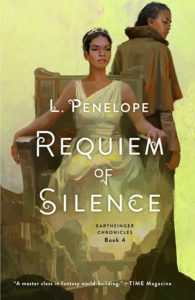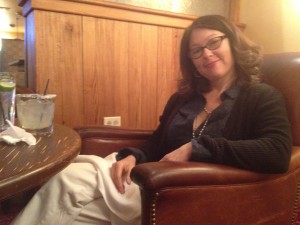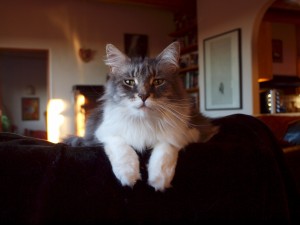

RITA ® Award-Winning Author of Fantasy Romance




In keeping with our story-writing theme – last week we talked about how much space to give to the denouement – our topic at the SFF Seven this week focuses on the Early Stages of Plot Development. Do we work alone, with critique partner, developmental editor, or in a round-table group.
My answer is that this has changed dramatically for me over the course of my writing career – and it can vary by book. Plus, just recently I’ve done something Totally New, which isn’t even on that list. Come on over to find out what that is!
 I’m lucky to have my crit partner and good friend, Carolyn Crane, visiting me for a few days. This involves much time spent writing, drinking and talking about writing. Perfection!
I’m lucky to have my crit partner and good friend, Carolyn Crane, visiting me for a few days. This involves much time spent writing, drinking and talking about writing. Perfection!
She’s even going to help me plot my next series, which is awesome, because she’s WAY better at plotting than I am. As in, she actually *does* it instead of my weirdly organic gardening method of plotting. Apropos of that, I’m over at Word Whores this morning, giving my non-plotter’s take on Development of character outer motivation and outer conflict.

 I’m over at Word Whores today, talking abut subplots (not my forte) and rambling a bit more on accessing other points-of-view.
I’m over at Word Whores today, talking abut subplots (not my forte) and rambling a bit more on accessing other points-of-view.
 I’m over at Word Whores today, talking about what *I* think outlining is good for.
I’m over at Word Whores today, talking about what *I* think outlining is good for.
 Tomorrow is Isabel’s 7th birthday, so this is her birthday portrait.
Tomorrow is Isabel’s 7th birthday, so this is her birthday portrait.
I’ve been working diligently on the Phantom story, laying down the words, working up the story. (I feel really hip saying it like that, like “laying down the tracks.” I’ve been kind of obsessed with Pitch Perfect and how songs mash-up. That, however, is probably a different, but related post.)
It’s been interesting because, as you may or may not recall, this will be an eSerial. The story will be broken into six parts, released 2-4 weeks apart. I’m surprised at how much this feels like a new form to me. Normally I set up my story according the classic three-act structure. If you aren’t familiar, that means the Act I climax occurs around 25%, the midpoint or story hinge around 50%, the Act II climax at 75%, Act III climax at ~90% followed by denouement and assorted wrap-up. The simplest explanation I’ve heard for the three acts is: get your protagonist up a tree, throw rocks at him/her, get him or her down again. With the Phantom story, I figured out my overall arc and then set up mini-arcs for each episode as well. It makes for an interesting rhythm.
Lest you think I actually plot things out ahead of time, however, let me disabuse you of that notion immediately. I don’t. I can’t, really. I’m a write-for-discovery kind of gal and I seem to be unable to figure out the story any other way. I’m at peace with that. The writers who extensively plot and outline ahead of time usually call this “pantsing” as in “flying by the seat of your pants.” I don’t much like this term. I think it says more about their fear of being out of control than anything salient about my method.
I was realizing, as I worked up this new structure, that this is like stretching canvas for me. I have painter friends and I love to watch them prepare canvas. One taught me how, so I could easily transport one of his paintings home and re-stretch it. They assemble the wooden frame to a particular size, choose the type of canvas they want, pull it tight over the frame and staple or nail it on. Then they add various gessos or other foundations, depending on their plans. (At this point I get fuzzy on the details.)
This is how setting up the story is for me: choosing the size, the foundation, with a sense of how it will eventually look. Then I paint the picture.
The other really cool thing I discovered is how my structures interweave. Oh look, I’m back to the mash-up thing. Guess it IS related. See, if you don’t know, a mash-up is when they take two or more different songs and weave them together. They might share a rhythm line and then the melodies work around each other, playing in counterpoint and blending, creating an entirely new song. Forgive me if I’m getting terms wrong, because I’m just not very good at understanding music. I *want* to understand, so I listen intently to this kind of thing, wanting to organically GET how this works.
An old boyfriend once cited the fact that I listen to the same songs over and over again as one factor in him dumping me. I can see that. But I also see how my tendency to get fixated on something like this also contributes to my understanding of other things. I didn’t get why I’ve been listening to the Pitch Perfect mash-ups on iPod over and over until just now.
My story is working the same way. Okay – if you hate math, leave now. But this is an example of what I found out. If I do 6 15K episodes, that’s 90K, give or take. That’s my overall frame. The Act I climax of the overall story takes place then around 22,500 words. That’s in the second episode. By the end of Act I, I should have my protagonist thoroughly up a tree – all the story clues and components should be in place. If I look at the internal structure of Episode 2, the midpoint, the story hinge, where things really change direction, occurs at 7,500 words into the 15K episode (halfway), which is at 22,500 words overall. Do you see? The overall Act I climax will be the SAME EVENT as the Episode 2 midpoint!
Isn’t that cool??
Just me?
If it were a musical mash-up, it would be that point where the two songs spiral up together and hit that came climactic note, for one harmonious moment.
We’ll see if it works like I hope it will. Off to paint in some images!
We’re starting to get the warmer weather cloud formations again. Some of them are so funny – little self-contained spaceships sailing by.
So, I mentioned yesterday that over the weekend I pitched The Middle Princess to a St. Martin’s editor. It was interesting, because the advice is to always pitch just one book. Even if you envision the book as part of a series, the Laws of Querying say thou must never, ever pitch the series. You may only pitch a stand-alone book.
It’s a funny rule, as many have observed, because clearly publishers like series. They like them because readers like series. When was the last time you wanted to implore your favorite author to right something totally different, in a new world with characters you’ve never “met”? Never, right? In fact, I often have that sense of trepidation when my favorite authors come out with a whole new world and characters. I have to overcome my resistance. I drag my feet, not *wanting* to have to get to know all of these new people. What if I don’t like them? Why can’t I have my old friends back??
Ahem. Not that I get worked up about this kind of thing.
At any rate, this lovely editor gal, while asking me to send her the manuscript and a synopsis (yes – it’s a necessary evil. just write one already), also requested that I sketch out the next two books for her. That was the interesting part – I obeyed the Law of Querying and did not mention that I envisioned that the older and younger princesses would have their stories, too. But it must have been clear. Built-in trilogy. Yes, I totally see it that way.
There’s just one teensy, eensy problem.
Yeah – all of you who’ve been reading any length of time already know what it is.
I so cannot plot in advance.
Or at least… I thought I couldn’t. Turns out I can.
Break out the naked cherubs and dirty martinis!
I’ve oft extolled the many virtues of my critique partners, Laura and Marcella. Marcella is really good at character motivation, goals and obstacles – stuff I just hate to think about. And Laura is excellent at drawing out stories from my subconscious. Laura argues that I *do* know what the whole story is, that it’s all there swimming around in that black lake under my thoughts. She appears to be right.
All this time, I’ve thought I needed to perform the action of writing to draw out the story, but it turns out there are other methods. In a Yahoo IM conference, the three of us talked about the other two sisters, the overall arc and themes I set up in Middle Princess. They asked me questions, made suggestions and I told them the answers and whether their ideas were warm or cold.
It was exhilarating and fun.
At the end, I had my sketches of the next two books. This is extraordinary for me. I find it fascinating that I continue to discover new things about my writing process, to acquire skills I lacked before.
Kinda like it should be.
Sunset catching distant rainfall last night. Gorgeous shade of rose.
So, last week I talked about Danbling and Overthinging in plotting a series arc. Theoretically plotting one, since I’m not much of a plotter. But one of the insightful comments made me realize WHY I’m not much of a plotter. It comes back to how I live my whole life and The Monkey’s Paw.
You remember that short story, right? I think we all had to read it in school. The monkey’s paw grants three wishes, but at terrible cost to the wishers. I don’t want to blow the story if you haven’t read it, but it’s the syndrome where you wish for a million dollars and then your kid gets killed by a city bus and you get a million-dollar settlement. The moral of the story is that you shouldn’t interfere with fate, “they” say. That’s not so much the story I carry away, not being all that into fatalism.
I totally believe we map our own futures.
But.
I don’t think we can control it.
See, I’ve done training in a bunch of those systems where you map out a one-year, five-year, ten-year plan. You visualize exactly what you want, how you want it and precisely when. Most of the success gurus build off of this idea, in one way or another. The “exact” and “precise” aspects are meant to duck the monkey’s paw curse. You don’t let the tricksters mess with you – you specify exactly how you want your million dollars and when.
You know I’m all about “Be Careful What You Wish For.” What you get might not be exactly what you thought it would be. But for me, this doesn’t translate into “demand that the universe give you exactly what you want, when and where you want it.” That seems the height of arrogance to me.
This is why, despite my spreadsheets and other planning, I do not have a five-year plan.
I know what I want, what I wish for, how I’d like for my life to go. But I’m well aware I’m asking for gifts and blessings. If the universe chooses to rain good things on me, then I’m grateful. And I feel like part of that gratitude is leaving it up to Tao or the gods and goddesses or whoever, to give it to me in the best way at the best time.
So, while I have many plans and wishes, none of them are tied to time.
KAK’s comment made me see why I don’t really do this with plots, either. I do think the stories are gifts. I know in general what they’ll be and how they go, but I don’t feel like it’s my thing to control them. In fact, I think I’d be overstepping myself to impose my plan on them. That’s an excellent insight for me.
Now I just have to remember it when I start to overthing.
Order and chaos have been on my mind lately.
What, you too?
See, I’ve been thinking about writing methods, because last week on Word Whores was all about pre-plotting versus misting through a novel and this week is about writing rituals, or lack thereof.
What I’m discovering is that these things have a whole lot to do with how we set up the rest of our lives. This should be no surprise to me. I’m a fan of tesseract theory and how a small piece of one thing reflects the overall thing. I’ve talked before about how the structure of one day can be the pattern of your entire life. (This is an over-time concept, so don’t panic if you just had a nothing day.) So it makes sense that your overall life affects the pattern of a single day.
We all plan our lives differently. We have different amounts of pre-plotting or misting to our days. Some of us have structure thrust upon us in the form of jobs that require us to be behind our desks from x o’clock to y-thirty. Some jobs change daily and, though you might apply a tentative structure in the form of To-Do lists, this can change completely depending on phone calls and what hits the In-Box. I expect we find our way to jobs that suit us this way. I love my day job for an environmental consulting firm because all that matters is the quality of my work and that I meet deadlines. No one particularly cares what the clock says when my butt is in the chair, just so long as I get the work done and get it done well.
This suits me. I had one of those “be there from x o’clock to y-thirty” jobs before and hated it.
A friend of mine once told me she’d read a psych study that showed that people with very orderly internal lives have wild and disorderly gardens. Likewise, people with more chaotic internal lives tend to produce orderly gardens. She said this while looking at my untamed cottage garden. The photo above shows my usual gardening style, though we’d only been in that house a few years and I hadn’t had time to completely convert it to a jungle-tangle. If I were to show you a picture of my friend’s garden, you would see her neatly bordered rows, with bunches of plants set an exact distance apart. Very pleasing to the eye.
I was forever wanting to sneak over and plant a stray something in the wrong spot.
At any rate, I’ve discovered that, though I’m an orderly person in many ways: ritualistic about my days, methodical in scientific work and my love for spreadsheets is near legendary, there’s another side of me that loves to fling order to the winds and embrace chaos.
I may never plot simply because I love the wildness of an unplanned novel. Oh yeah, later I’ll go back and thin it out here and there, tweak the plantings for maximum effect.
But first I’m tossing my seeds into the wind. Just to see what I get.
I’m taking a plotting class.
For the second time now. Not as in, I flunked the first time so I have to take it again to get a passing grade for my major. That was Immunology. Why Immunology among all those hard-core pre-med courses I took? I have no idea. No one knows which heel is the one that didn’t get sufficiently dipped, I suppose.
No, this is a different online plotting class that I’m trying because I keep feeling like I should learn how to plot better.
And no, this has never been feedback on my book, that the plot has to be stronger. I think I have this idea that if I learn to plot, everything will be much easier. See, the RWA folks are all about plotting vs. pantsing. In fact, they ask you that after they ask your name and where you’re from at receptions. The first time someone asked me, I couldn’t even figure out what word they were saying. “Pantser” is a person who writes by the seat of her pants, rather than plotting out the story ahead of time.
I’m not fond of the term, frankly.
I dropped out of the first plotting class because I hated it so much. They had us start with loglines, which is basically your pitch line. “A beautiful young girl, abused by her family, sneaks into a dance where she captures the heart of the local charming ruler. Afraid that he’ll spurn her once he discovers her base origins, she flees, forcing him to search for her so they might live happily ever after.”
That kind of thing.
And my deal is, I don’t know how you can know what the story is about until I write it. Writing for me is a process of discovery. I write essays the same way. And these blog posts. You can probably tell that half the time I don’t know what my point is. I start with an image or an idea and talk about it for a while. Sometimes I make it to a point, sometimes I don’t.
When I *do* find a point, it’s a wonderful moment. My friend, Craig Arnold, now a dead poet, which he might actually find kind of amusing, taught me a way to think of it. I think it was the Chinese, he said, who talk about the moment the poem “opens its eyes.”
I live for that moment. Which I suppose makes me a crazy writer, even if not a cinematically worthy one.
Starting with the logline is, to me, like starting with the moment the story opens its eyes. Which feels fundamentally wrong and backwards, like I’m jumping to the end without having earned it.
Like all ventures that can end in a thrilling reward, there’s also doubt and fear. Which is probably why I keep thinking I should learn to plot. Just in case. So I started a second class. And we’re starting with loglines. I’ll give it a few more days.
Prophylactic heel-dipping, as it were.